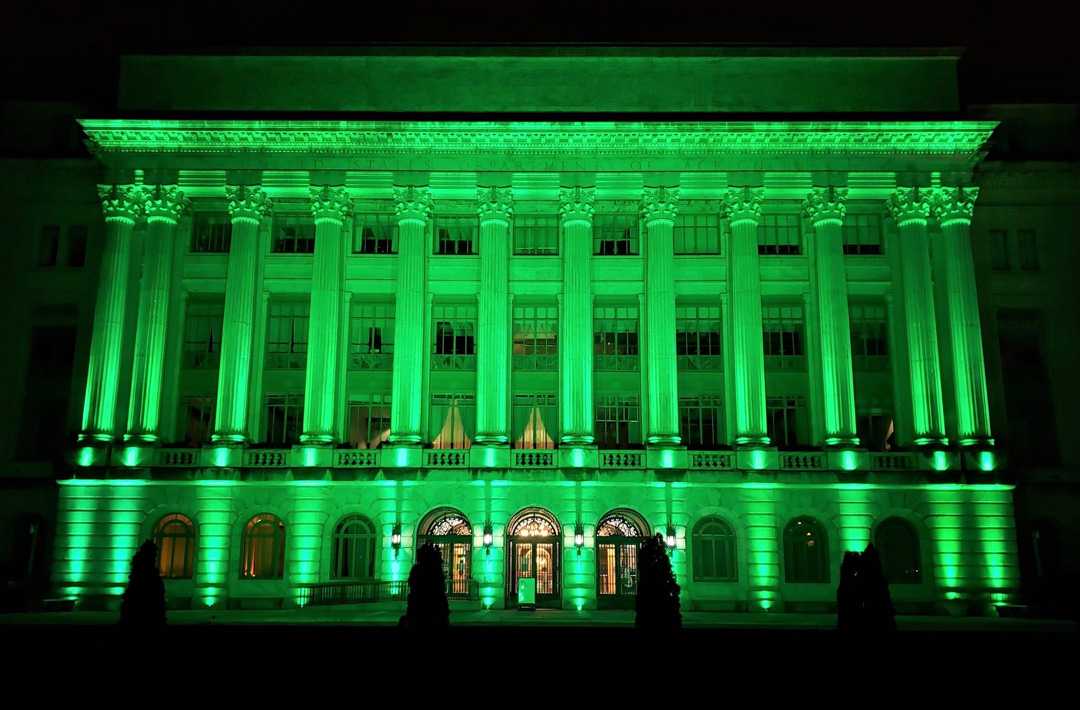Chauvet fixtures turn Washington landmark green
- Details

From 18-21 April, the building held another distinction, being the only federal structure in the capital to be lit in green. Radiating in emerald against the Washington sky, the USDA home office commemorated the International Year of the Plant in stunning fashion.
Endowing the James L. Whitten Building with its green glow was a lighting design by Atmosphere, Inc.’s Sparky Hopkins that featured a collection of colour rendering fixtures including 12 WELL Fit uplighters from Chauvet Professional.
Arranged along the ground level, the battery powered and wirelessly controlled fixtures were used to uplight the massive masonry wall that supports the building’s columns. For Hopkins, the WELL Fit units were the natural choice for the commemorative project.
“Since this is a government building and we were lighting the main entrance, we had to meet an extensive list of safety requirements,” he says. “The government folks needed to be assured that there would not be any cables or equipment that would cause a tripping hazard. Being battery powered, the Well Fits checked that box.
“For the opening night, the client wanted to have the building illuminated on cue, so I needed an IP65 rated wireless fixture that I could talk to with my DMX console,” continues Hopkins. “Being wireless and outdoor rated, the Well Fits checked those boxes box too.”
Hopkins achieved an even field of green across the face of the building that accentuated its elegant design features. “We ran full green on all of the fixtures we placed at the building,” he says. “Then we covered the building’s existing architectural fixtures with green filters.”
The consistent focus that the Atmosphere, Inc. team achieved across the building was also critical to the lighting’s impact. Since the lighting design was built during the day, it was too bright for Hopkins to see exactly where the fixtures were being focused. He compensated for this by calculating fixture positions precisely with a tape measure and using a bubble level to ensure they were pointing straight up.












